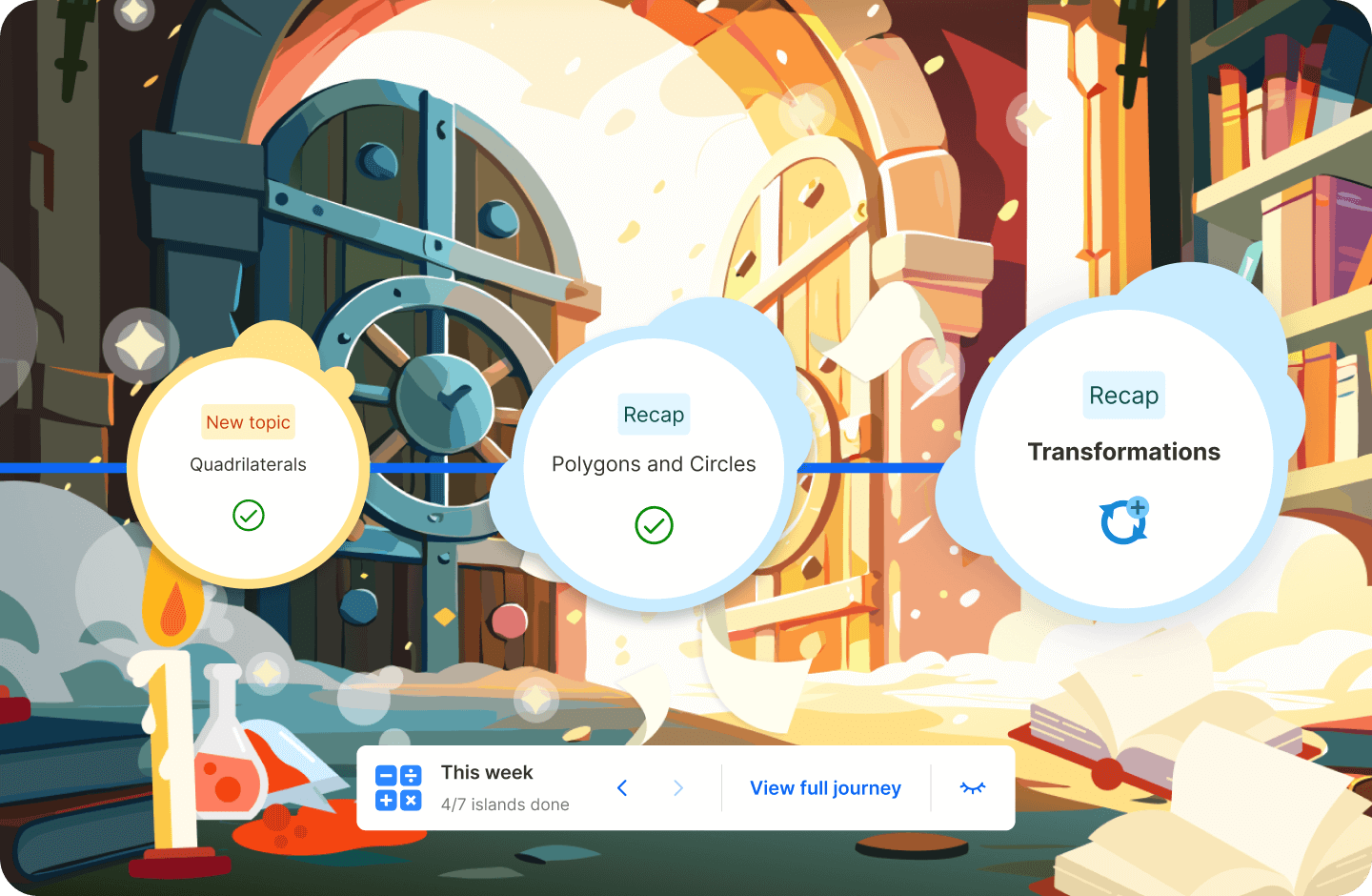Confused about clauses and conjunctions? Perplexed about progressive and perfect tenses? You’re in the right place.
Learn about all the terminology your child will encounter in Key Stage 2 English and beyond. Feel confident helping your child with their English homework!
Grammar
Adjectives and adverbs
An adjective describes a noun or a pronoun (big, brilliant, shy). An adverb describes a verb, adjective, or another adverb or clause. It can tell us about the manner, frequency, time, place, or degree of an action (quickly, often, yesterday, really, here).
Adverbial
An adverbial is a phrase that functions as an adverb (during the summer, within the hotel).
Comparative adjective
A comparative adjective is used to compare one noun to another noun. A comparative adjective often ends in ‘-er’ (larger, funnier, more beautiful).
Modal adverb
A modal adverb describes how likely something is (perhaps, obviously, undeniably).
Superlative adjective
A superlative adjective is a word that is used to describe a noun as having more of a particular quality than another. A superlative adjective often ends in ‘-est’ (best, warmest, coolest).
Conjunctions and clauses
A conjunction is a word that links together words, phrases and clauses (and, because). A clause is a phrase which contains a subject and a verb, and is split into main clauses and subordinate clauses.
Coordinating conjunction
A coordinating conjunction links together words, phrases and clauses of equal importance (for, and, nor, but, or, yet, so).
Main clause
A main clause can stand alone as a sentence (she flipped the pancake expertly).
Relative clause
A relative clause is a type of subordinate clause. It modifies a noun by using a relative pronoun (who, that) to refer back to the noun. However, this might also be omitted (the man (who) I was meeting was late).
Subordinate clause
A subordinate clause begins with a subordinating conjunction. It cannot stand alone as a sentence (although it was late, due to the rain).
Subordinating conjunction
A subordinating conjunction introduces a subordinate clause (until, because, since).
Determiners
A determiner is a word used in front of nouns or noun phrases to identify the noun (my, this, their).
Article
An article is a type of determiner. There are three articles in the English language: ‘a’, ‘an’ and ‘the’.
Definite article
‘The’ is the definite article. It is a type of determiner used in front of nouns or noun phrases to show that the noun is known.
Demonstrative determiner
A demonstrative determiner ‘points’ at a specific noun that the speaker is referring to (this/that pen, those/these toys).
Infinite article
There are two infinite articles: ‘a’ and ‘an’. These are the types of determiners used in front of nouns or noun phrases to show that the noun is unknown.
Interrogative determiner
An interrogative determiner is used to ask questions about a noun (which hat, what year, whose dog).
Possessive determiner
A possessive determiner tells us who the noun belongs to (my, your, his, our).
Quantifier
A quantifier tells us how much of a noun there is (three, less, another).
Nouns
A noun is a word used to identify a person, place, or a thing (flower, desk, sky).
Abstract noun
An abstract noun is intangible. It can include feelings or concepts (sadness, peace, time).
Collective noun
A collective noun refers to a group of people, animals or things (herd, fleet).
Common noun
A common noun is a non-specific person, place or thing. Most nouns are common nouns (dog, tree).
Compound noun
A compound noun is where two or more words join together to form a noun (rainbow, cowboy).
Concrete noun
A concrete noun is a tangible object that we can detect with our senses (flower, sofa, spaghetti).
Countable noun
A countable noun can be counted and pluralised (two cups).
Proper noun
A proper noun is a specific name, like the name of a city, country, brand or person. Proper nouns are always capitalised (London, Sarah, Italy, Atom Learning).
Uncountable noun
An uncountable noun cannot be counted. It only has one form, so there is no singular/plural (water, flour).
Prepositions
A preposition is a word which connects nouns, pronouns and noun phrases to another word (in, with, beside, among).
Participle preposition
A participle preposition is a word that ends with ‘-en’, ‘-ing’ or ‘-ed’ that acts as a preposition (give, considering, provided).
Phasal preposition
Phrasal preposition is where two or more words function as a single preposition (in spite of, next to).
Pronouns
A pronoun is a word that is used in place of a noun to avoid repetition (she, myself).
Demonstrative pronoun
A demonstrative pronoun replaces a noun phrase when we ‘point’ at things or people (these, this, that).
Personal pronoun
A personal pronoun replaces the subject or object that is already known (she, me, we).
Possessive pronoun
A possessive pronoun replaces noun phrases that tell you who owns something (mine, ours).
Reflexive pronoun
A reflexive pronoun is used to refer back to a subject (themselves).
Relative pronoun
A relative pronoun introduces relative clauses and gives extra information about a noun (who, which).
Sentences
A sentence is a group of words that can stand on their own and make sense without any other words or phrases. Sentences start with a capital letter and end with a full stop, exclamation mark or question mark.
Complex sentence
A complex sentence is made up of one main clause and one or more subordinate clauses (when I grow up, I want to be a teacher).
Compound sentence
A compound sentence is made up of two main clauses, joined together with a coordinating conjunction (I opened the door and she walked in).
Simple sentence
A simple sentence is made up of just one clause (I opened the door).
Verbs
A verb expresses a state or action (run, eat, feel).
Infinite verb
An infinite verb is the most basic form of the verb. It always takes the form ‘to’ + verb (to paint, to sing)
Modal verb
A modal verb expresses how certain or possible an action is (will, might, should). It must be followed by another verb (will go, should eat).
Phrasal verb
A phrasal verb is made up of a verb + either an adverb or a preposition (look after, take down, break up).
Verb agreement
In a sentence, the subject and the verb need to agree with each other. This means they both need to be singular or they both need to be plural, and the verb form must match the person.
First person
First person is when the sentence is written from the point of view of the person or people involved (I, we).
Perfect tense
Perfect tense describes actions that have been started and completed (he had walked).
This can be split into the past perfect tense (he had walked), the present perfect tense (he has walked) and the future perfect tense (he will have walked).
Progressive tense
The progressive tense describes an event which is ongoing, or that happened and will happen for a long period of time. It's also known as the continuous tense (they are singing).
The progressive tense can be split into the past progressive tense (they were singing), the present progressive tense (they are singing) and the future progressive tense (they will be singing).
Second person
Second person is used when the sentence addresses someone directly (you).
Simple tense
Simple tense is used to talk about actions happening right now, or actions that happen regularly.
This can be split into the simple past tense (I walked), the simple present tense (I walk) and the simple future tense (I will walk).
Third person
Third person is used when the sentence talks about other people (he, she, they, it).





.png)
